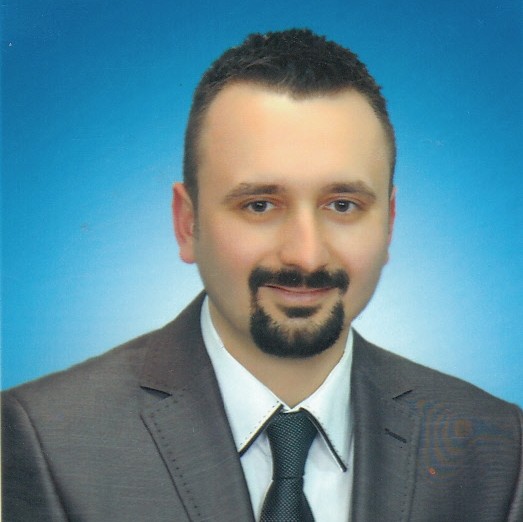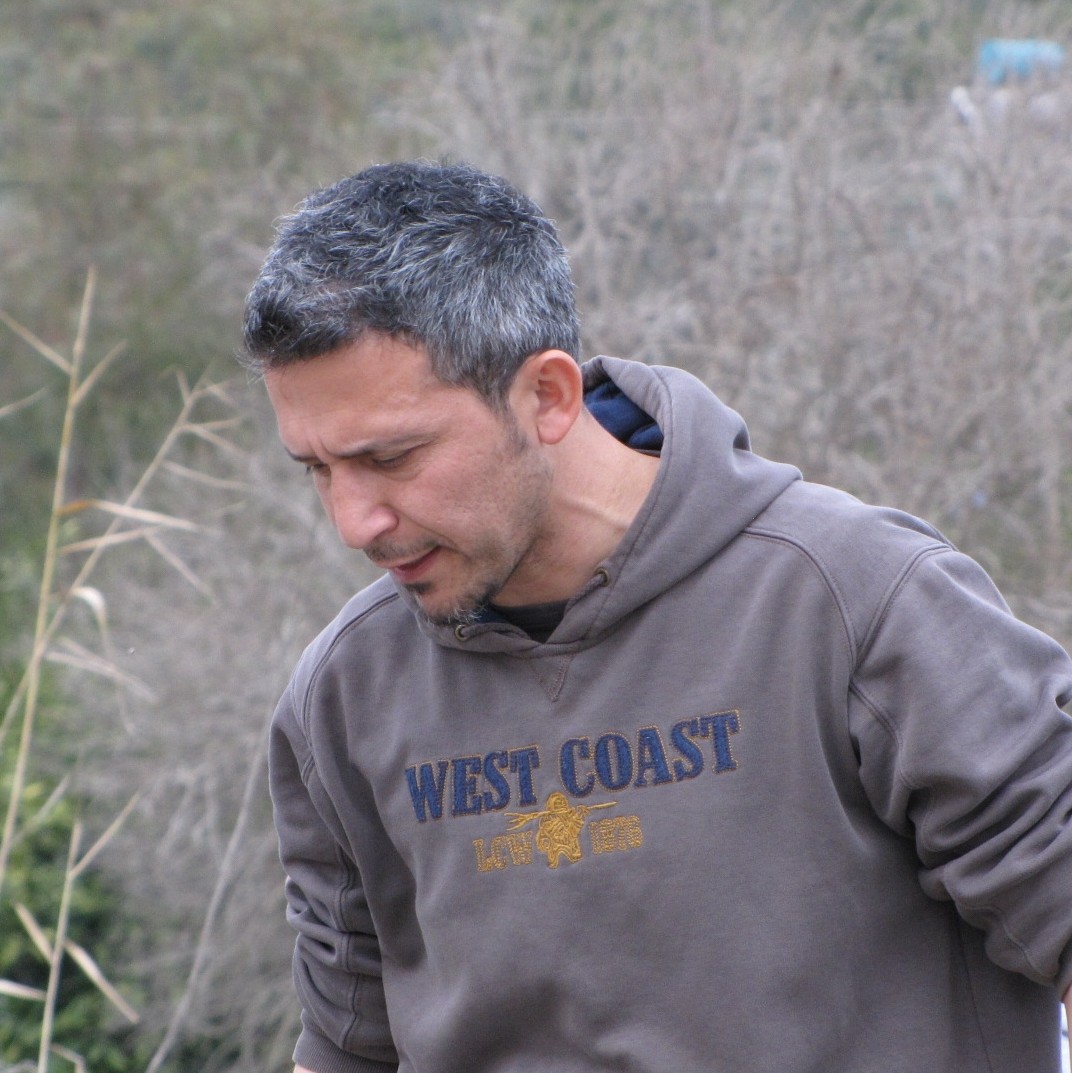Journal Boards
Editor in Chief

2.411 / 5.000
Serhat URSAVAŞ was born on 13.01.1981 in Manyas district of Balıkesir. He completed his primary, secondary and high school education in Manyas. After getting into Ankara University, Faculty of Forestry in 1999, he graduated from the same department in 2003 with the title of "Forest Engineer". He did his military service between 2004-2005 as a Biology teacher at Mehmetçik Private School in Kızıltepe district of Mardin province. Later, he completed his Master's degree in Forest Engineering Department of Ankara University, Institute of Science between 2005-2008 and earned the title of "Forest Engineer". He completed his doctorate in Biology Department of Ankara University, Institute of Science between 2008-2011 and earned the title of "Doctor". Dr. Serhat Ursavaş, who introduced a new moss species to the world literature during his doctoral thesis studies, named this new species as; He named it "Cinclidotus asumaniae" to commemorate Prof. Dr. Asuman Efe, a faculty member at the Department of Forest Botany, Faculty of Forestry, Istanbul University, who lost her life in a tragic traffic accident in Bolu in 2010. At the same time; during his doctorate education, he received the Turkish Education Foundation (TEV) doctoral scholarship for two years between 2009-2011. Serhat URSAVAŞ, who has many articles on his field of expertise "Systematics and ecology of mosses (musci)", is married and has two children. He was appointed as Assistant Professor at the Department of Forest Engineering, Faculty of Forestry, Çankırı Karatekin University on 11.05.2012. He received the title of Associate Professor at the Department of Forest Engineering, Faculty of Forestry, Çankırı Karatekin University in 2019. Between 2012-2016; He served as the Deputy Head of the Department of Forestry, Faculty of Forestry, Department of Forestry Engineering, Çankırı Karatekin University. Between 2016-2020, he served as the Deputy Director of the Institute of Science, Çankırı Karatekin University. He has been the Head of the Department of Forest Botany since 2014 and the Head of the Department of Forestry Engineering since 2021. In addition, in 2015, he started to publish a journal called "Anatolian Bryology", which is scanned by many international indexes, and he is currently the Editor-in-Chief of this journal, which he founded.
Geri bildirim gönder
Çeviri sonuçları mevcut
Editor

2.411 / 5.000
Serhat URSAVAŞ was born on 13.01.1981 in Manyas district of Balıkesir. He completed his primary, secondary and high school education in Manyas. After getting into Ankara University, Faculty of Forestry in 1999, he graduated from the same department in 2003 with the title of "Forest Engineer". He did his military service between 2004-2005 as a Biology teacher at Mehmetçik Private School in Kızıltepe district of Mardin province. Later, he completed his Master's degree in Forest Engineering Department of Ankara University, Institute of Science between 2005-2008 and earned the title of "Forest Engineer". He completed his doctorate in Biology Department of Ankara University, Institute of Science between 2008-2011 and earned the title of "Doctor". Dr. Serhat Ursavaş, who introduced a new moss species to the world literature during his doctoral thesis studies, named this new species as; He named it "Cinclidotus asumaniae" to commemorate Prof. Dr. Asuman Efe, a faculty member at the Department of Forest Botany, Faculty of Forestry, Istanbul University, who lost her life in a tragic traffic accident in Bolu in 2010. At the same time; during his doctorate education, he received the Turkish Education Foundation (TEV) doctoral scholarship for two years between 2009-2011. Serhat URSAVAŞ, who has many articles on his field of expertise "Systematics and ecology of mosses (musci)", is married and has two children. He was appointed as Assistant Professor at the Department of Forest Engineering, Faculty of Forestry, Çankırı Karatekin University on 11.05.2012. He received the title of Associate Professor at the Department of Forest Engineering, Faculty of Forestry, Çankırı Karatekin University in 2019. Between 2012-2016; He served as the Deputy Head of the Department of Forestry, Faculty of Forestry, Department of Forestry Engineering, Çankırı Karatekin University. Between 2016-2020, he served as the Deputy Director of the Institute of Science, Çankırı Karatekin University. He has been the Head of the Department of Forest Botany since 2014 and the Head of the Department of Forestry Engineering since 2021. In addition, in 2015, he started to publish a journal called "Anatolian Bryology", which is scanned by many international indexes, and he is currently the Editor-in-Chief of this journal, which he founded.
Geri bildirim gönder
Çeviri sonuçları mevcut
Assistant Editor

Domain Editor


Editorial Board

3 Şubat 2015-20 Temmuz 2020 tarihleri arasında Recep Tayyip Erdoğan Üniversitesi Güzel Sanatlar Tasarım ve Mimarlık Fakültesi Peyzaj Mimarlığı Bölümü Bitki Materyali ve Yetiştiriciliği Anabilim Dalında öğretim üyesi olarak görevine devam eden Gökhan Abay, Güzel Sanatlar Tasarım ve Mimarlık Fakültesi ile Mühendislik Fakültesinin birleştirilmesi kararı sonrası 20 Temmuz 2020 tarihinden itibaren Mühendislik ve Mimarlık Fakültesi bünyesinde görev yapmaktadır. Abay, 24 Mart 2015-20 Temmuz 2020 tarihleri arasında Güzel Sanatlar Tasarım ve Mimarlık Fakültesi Dekanlığı görevini yürütmüştür. 2016 yılında Tübitak Turkish Journal of Botany dergisinde Editörler Kuruluna seçilen Abay halen bu görevine devam etmektedir. İngilizce bilen Gökhan Abay, evli ve iki erkek çocuk babasıdır.

In teaching, I work teaching the Plant Morphology and Pharmacobotany courses. In research, I seek to understand the structuring of plant communities in time and space, especially for communities of bryophytes. I highlight the use of multivariate statistical techniques to answer my questions.

William Buck’s main research interests are associated with understanding the relationships of different groups of mosses, especially pleurocarps (with creeping, branched stems and laterally placed spore capsules). To see living mosses in the field, William has traveled throughout much of North and South America, as well as to parts of Europe, Asia, Africa, Australia, New Zealand and Melanesia. He has done floristic surveys in the West Indies and central French Guiana and is currently working on a bryophyte flora of Prov. Antartica Chilena, in southernmost Chile, with John Engel of the Field Museum (Chicago) who is working on the liverworts. These activities have given William wide experience with morphological variation in mosses. More recently he has undertaken molecular studies, in association with Jon Shaw of Duke University, in an attempt to use DNA sequence data to better understand pleurocarp relationships.
William is also heavily involved in scientific editing, acting as the scientific liason to the NYBG Press and am the Editor of the Memoirs of the New York Botanical Garden. He is an editor for Tropical Bryology and Nova Hedwigia. William took over the editorship of The Bryologist in March 2005.
Although he does not do much formal, classroom teaching, William is active in a number of educational and conservation programs. He is the primary organizer for the Tuckerman Lichen Workshops which are a forum for amateur lichenologists to interact with professionals and advance their study of lichens. These have been meeting for about 12 years. A couple of years ago he agreed to begin a similar series on mosses. The second Howard Crum workshop was held in May 2005 in northern Vermont. William is active at the local level and is a town-appointed member of the Town of Kent (Putnam County, NY) Conservation Advisory Committee. He is also a trustee of the Putnam County Land Trust.

Advisory Board

3 Şubat 2015-20 Temmuz 2020 tarihleri arasında Recep Tayyip Erdoğan Üniversitesi Güzel Sanatlar Tasarım ve Mimarlık Fakültesi Peyzaj Mimarlığı Bölümü Bitki Materyali ve Yetiştiriciliği Anabilim Dalında öğretim üyesi olarak görevine devam eden Gökhan Abay, Güzel Sanatlar Tasarım ve Mimarlık Fakültesi ile Mühendislik Fakültesinin birleştirilmesi kararı sonrası 20 Temmuz 2020 tarihinden itibaren Mühendislik ve Mimarlık Fakültesi bünyesinde görev yapmaktadır. Abay, 24 Mart 2015-20 Temmuz 2020 tarihleri arasında Güzel Sanatlar Tasarım ve Mimarlık Fakültesi Dekanlığı görevini yürütmüştür. 2016 yılında Tübitak Turkish Journal of Botany dergisinde Editörler Kuruluna seçilen Abay halen bu görevine devam etmektedir. İngilizce bilen Gökhan Abay, evli ve iki erkek çocuk babasıdır.
İlk, orta ve lise eğitimini Ankara'da tamamlayan Prof. Dr. Güray UYAR Lisans eğitimine 1988 yılında Ankara Üniversitesi Fen Fakültesi Biyoloji Bölümünde başladı. 1992 yılında iyi derece ile mezun olduktan hemen sonra aynı üniversitenin Fen Bilimleri Enstitüsü Biyoloji Anabilim Dalında Y. Lisansa başladı. 1995 yılında Y. Lisans programından mezun olur olmaz. Aynı anabilim dalında Doktora programına devam etti. 1999 yılında Doktora derecesini aldı. Ardından 2000 yılında Zonguldak Karaelmas Üniversitesi Fen Fakültesi Biyoloji Bölümünde kurucu öğretim üyesi olarak göreve başladı. 2013 yılına kadar Zonguldak'ta görev yapan Prof. Dr. Güray UYAR 2014 yılında Gazi Üniversitesi Polatlı Fen Edebiyat Fakültesi, Biyoloji Bölümüne Bölüm Başkanı olarak geçti.

In teaching, I work teaching the Plant Morphology and Pharmacobotany courses. In research, I seek to understand the structuring of plant communities in time and space, especially for communities of bryophytes. I highlight the use of multivariate statistical techniques to answer my questions.

Karayosunları sistematiği ve ekolojisi






William Buck’s main research interests are associated with understanding the relationships of different groups of mosses, especially pleurocarps (with creeping, branched stems and laterally placed spore capsules). To see living mosses in the field, William has traveled throughout much of North and South America, as well as to parts of Europe, Asia, Africa, Australia, New Zealand and Melanesia. He has done floristic surveys in the West Indies and central French Guiana and is currently working on a bryophyte flora of Prov. Antartica Chilena, in southernmost Chile, with John Engel of the Field Museum (Chicago) who is working on the liverworts. These activities have given William wide experience with morphological variation in mosses. More recently he has undertaken molecular studies, in association with Jon Shaw of Duke University, in an attempt to use DNA sequence data to better understand pleurocarp relationships.
William is also heavily involved in scientific editing, acting as the scientific liason to the NYBG Press and am the Editor of the Memoirs of the New York Botanical Garden. He is an editor for Tropical Bryology and Nova Hedwigia. William took over the editorship of The Bryologist in March 2005.
Although he does not do much formal, classroom teaching, William is active in a number of educational and conservation programs. He is the primary organizer for the Tuckerman Lichen Workshops which are a forum for amateur lichenologists to interact with professionals and advance their study of lichens. These have been meeting for about 12 years. A couple of years ago he agreed to begin a similar series on mosses. The second Howard Crum workshop was held in May 2005 in northern Vermont. William is active at the local level and is a town-appointed member of the Town of Kent (Putnam County, NY) Conservation Advisory Committee. He is also a trustee of the Putnam County Land Trust.



